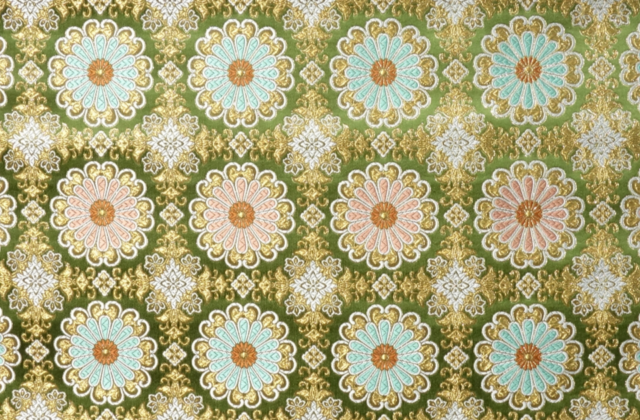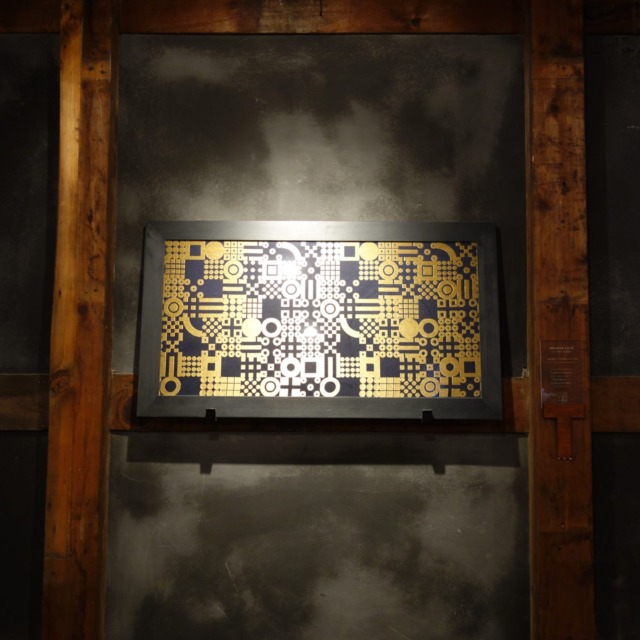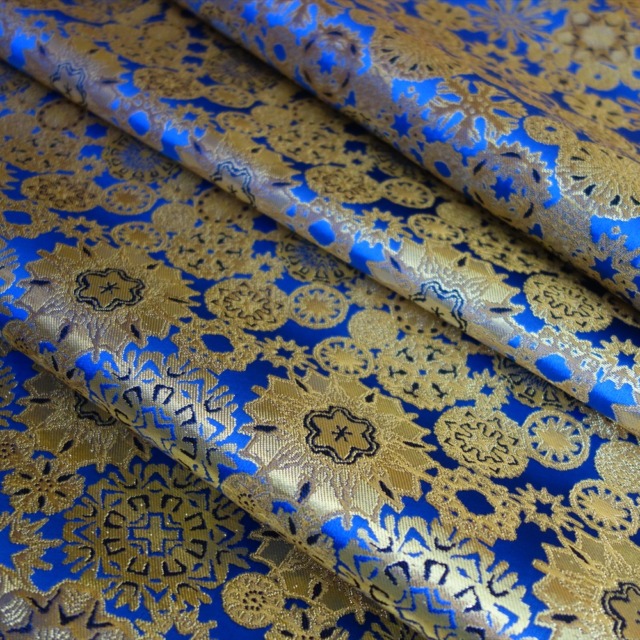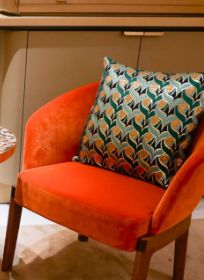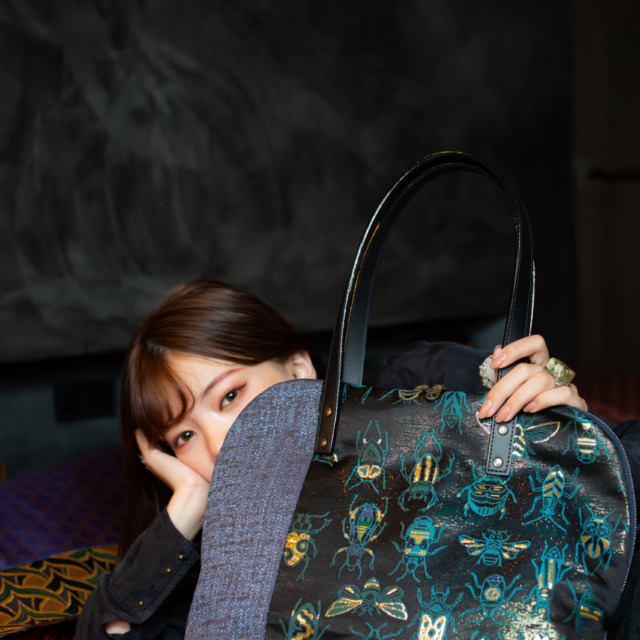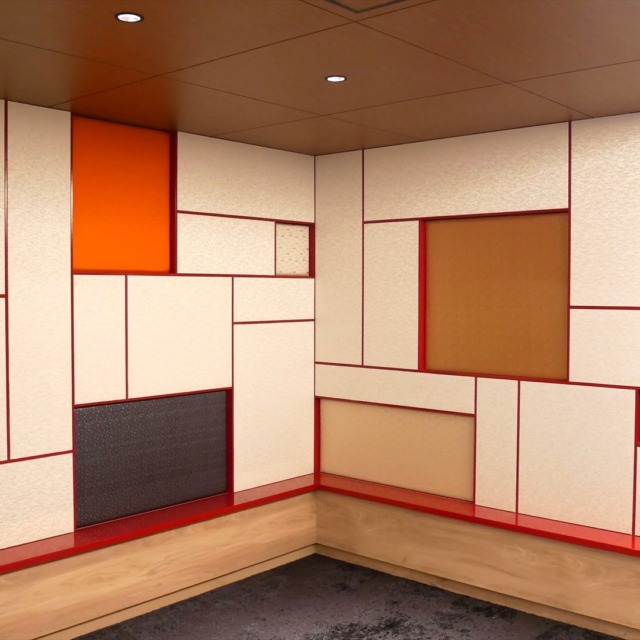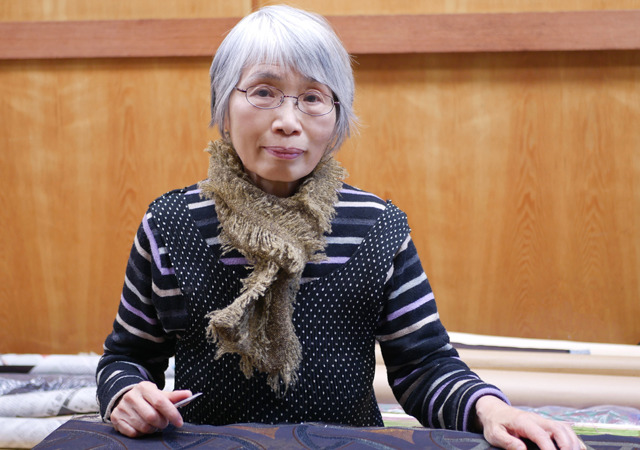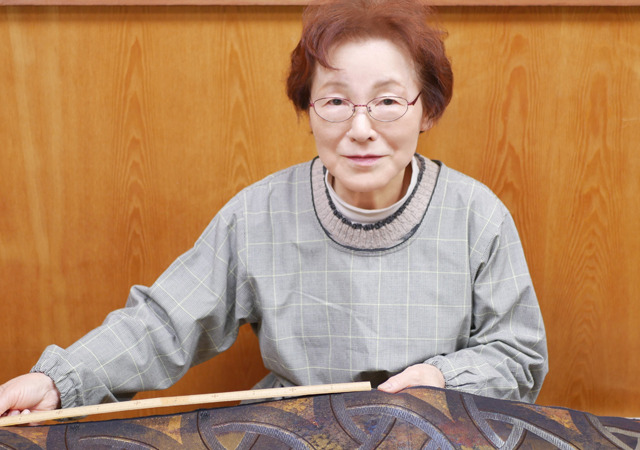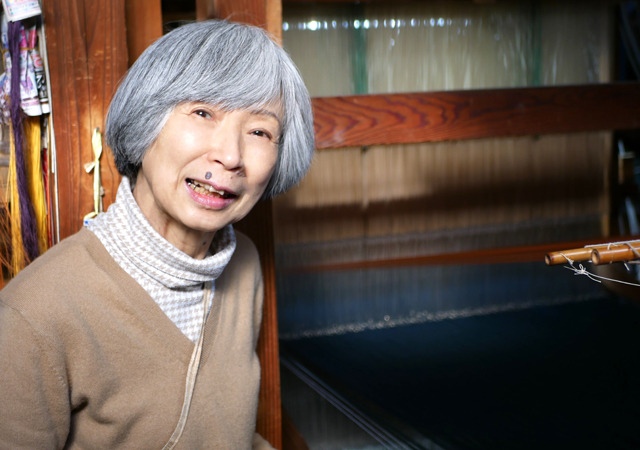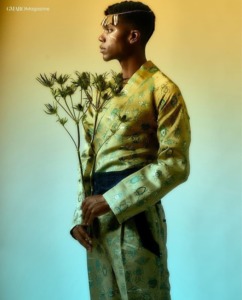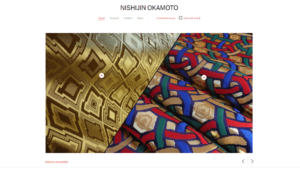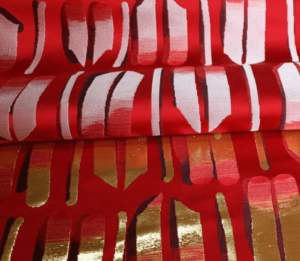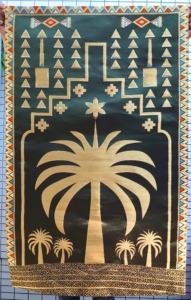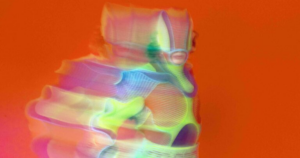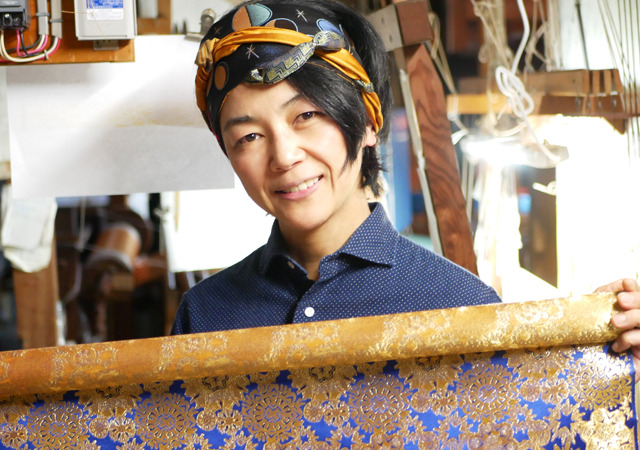
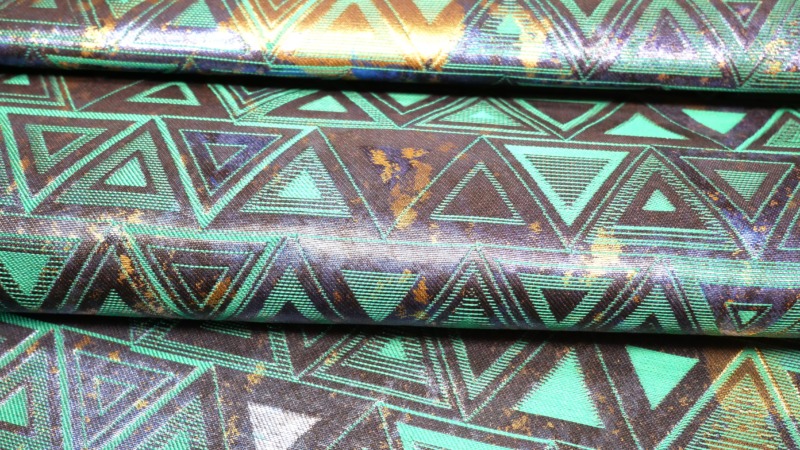
Traditional Nishijin technique: Hikibaku|Future|Nishijin Okamoto ‘C’
We at Okamoto Nishijin have been weaving gorgeous Nishijin brocade using a technique known as “honkin hikibaku” since the company was founded. Starting with this issue, we will write about the “A B C” of hikibaku in three parts.
This time it is “B”.
Traditional Nishijin technique: Hikibaku|Future
Characteristics of Nishijin textiles
Nishijin textiles are one of Japan’s world-class traditional crafts. Its most distinctive feature is ‘yarn-dyed textiles’, in which the threads are dyed first and woven in different colours to produce a depth of colour and texture when woven. According to the Nishijin Textile Industry Association, which holds the Nishijin textile trademark, there are 12 different techniques that are recognised as ‘Nishijin textile’.
For more information on the 12 types, click here.
The search for the future of Nishijin textiles.
Innovation and tradition
While preserving traditional techniques, Nishijin textiles have been constantly brushed up, with ground looms evolving into sky drawing looms, equipped with Jacquard, power looms, data-assisted pattern paper, etc.
The video below shows how the Sorahiki-bata, which was used from the Heian to Meiji periods, was restored in 2022 at the Nishijin Weaving Hall as a project to commemorate the 555th anniversary of the Nishijin name. Our president also took part in the restoration.
About the loom
We uses shuttle looms and maintains the traditional weaving method using silk yarns, but in Nishijin as a whole, Fukuoka Kigyo has developed a special textile with a design by combining carbon and aramid fibres, and is trying to launch a new business, the carbon fibre business, and is also working on textiles using glass fibres and recycled yarns made from PET bottles, etc. Other companies are also using new materials, such as working on textiles made from recycled yarn made from glass fibres and plastic bottles.
We specialise in silk and use silk yarns. We want to preserve the beautiful expression of silk yarns.
Every weaver is troubled by the fact that they want to weave wide fabrics such as 150 cm in accordance with the times, but the weaving machines for this are high-speed looms such as rapier looms. Our company wants to protect weaving on low-speed shuttle looms. The reasons why we insist on low-speed shuttle looms are given below. That is why we maintain our hand looms and power looms in every possible way. We want a new shuttle loom with a width of 150 cm, and we hope that the regions that love shuttles will get together and start a project such as ‘We will develop a new shuttle loom’.
Why we stick to low-speed shuttle looms
Textiles are made by combining warp and weft yarns. The tension of warp yarns on low-speed looms is looser than on high-speed looms. Weaving on shuttles creates a natural peak in the weft yarn when the weft yarn is inserted, which creates slack in the weft yarn. On high-speed looms after rapier, the weft yarns enter in a straight line and can be woven without looseness. Whether this looseness is necessary or not depends on the product used, but by weaving on shuttles, it is possible to weave the relaxed “fullness” required for high-class Nishijin brocade such as ours. Shuttle looms can also be used to weave only the patterned areas such as stitching, so shuttle weaving at low speed is essential for our silk fabrics in order to protect their quality.
Passing on to the next generation
Nishijin is a division of labour. In order to continue this system for the next generation, it is necessary not only for us weavers to survive, but also to protect the craftsmen in the division of labour. The Nishijin Weavers’ Association is cooperating with the Kyoto Municipal Industrial Technology Research Institute and other organisations to promote measures to prevent the depletion of parts.
We are actively communicating the attractiveness of Nishijin textiles via the internet and participating in exhibitions, etc., in order to make them widely known, especially among young people. We do not actively invite visitors, but we have received applications from students and other visitors, and we are happy that young people are interested in our work.
Nishijin textiles go to the world market
This section chronicles our examples of how Nishijin brocade has been accepted in the global fashion and interior design markets.
See examples of how our Nishijin brocade has been accepted and evolving and developed in markets other than shrines and temples.
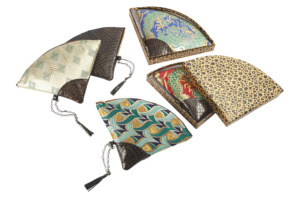 |
2016 The Wonder 500™ accreditationOur unique design and fan-shaped bags were highly commended. The Wonder 500™ is a Cool Japan project that identifies and promotes to the world “outstanding regional products of which Japan should be proud that are not yet known to the rest of the world”. |
 |
2017 Visit to Finnish textile companiesHaving been selected for the ‘Overseas Business Strategy Promotion Support Project’, in January 2017 we went to ‘Finland’ for market research and visited and inspected all the major textile companies in Helsinki. |
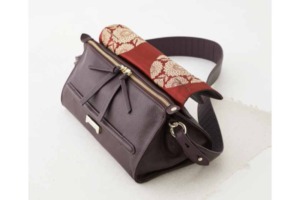 |
2017 Collaboration with ZanellatoA collaboration with the Italian brand ZANELLATO was realised, with our rugs being used for the lining of NINA. The design is an original “hinagiku pattern” by our textile designers. The daisy is widely loved in Italy. |
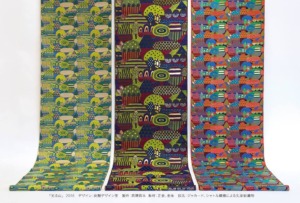 |
2018 ‘150 Years of Japonisme’ exhibition at the Musée des Arts Decoratifs, ParisThe joint production “Hikaru Yama” by Carbonic Acid Design Office x Nishijin Okamoto was selected for the “150 Years of Japonisme” exhibition at the Musée des Arts Décoratifs in Paris. The Carbonic Acid Design Office was in charge of the design, while the Company was in charge of the crest design and weaving. |
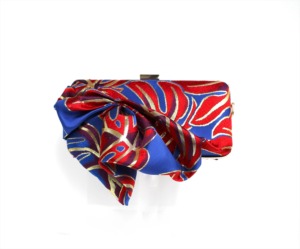 |
Winner of the 2018 Omotenashi SelectionThe Sparkling Clutch Bag by Nishijin Okamoto x Kitakikaku won the OMOTENASHI Selection. The award was established in 2015 with the aim of discovering and promoting outstanding Japanese products and services with a spirit of hospitality to the world. Kitakitakku’s unique bag designs are matched with our silk fabrics. |
 |
2019年 2019 Golden Globe Awards.Dress in collaboration with Finnish designer Mr Teemu Muurimäki. Finnish actress Ms Laura Birn in a golden dress at the Golden Globe Awards. |
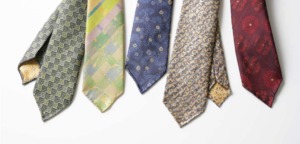 |
2019年 2019 Collaboration with TIE YOUR TIETIE YOUR TIE, the long-established Italian tie brand, presents the Sette Pieghe tie in collaboration with us as the first double name with a Japanese company.Buy now |
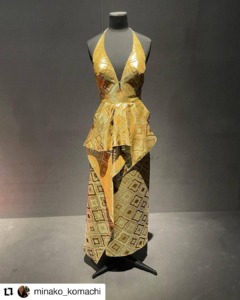 |
2021年 Design Museum HelsinkiIntimacyIntimacy” at the Helsinki Design Museum, featuring a Nishijin brocade dress by Mr Teemu Muurimäki with a three-storey rhombus pattern. |
We are constantly striving to make our products known both in the domestic and international market.
We weave foil products every day.
We started to develop sales channels in 2012 and have been making proposals to the apparel industry for 10 years, but we almost gave up because of the high barriers in the industry. The reality is that even luxury brands can seldom use fabrics with a unit price of 3,000 yen per metre, while our silk fabrics cost more than 20,000 yen per metre. Even if we reduced our prices, our producers themselves were disappointed by the deterioration in quality, while the market was still confronted with the barrier of extremely high prices. Against this backdrop, we thought that ultra-high-priced fabrics such as “Hikari Foil” would not be accepted.
However, before giving up, we renewed the Hikifoil products we had loved with confidence and presented them in 2023, where they were warmly received by the market despite their high price.
People who saw Hikifoil for the first time said they had never seen such a fabric before, and we feel it was worth all the effort we put into explaining how Nishijin brocade Hikifoil is woven, including making videos of the weaving process.
This blog, “Traditional techniques handed down in Nishijin: Hikibaku|Future Hikifoil “C””, does not yet mention our history of selling Hikibaku on the general market, but we look forward to reporting on “Hikibaku Today” one after the other in the future.
We hope that you will warmly follow our reports in order to connect past technologies to the present and move forward into the future.
We hope that Nishijin kinran brocade will continue to be loved by many people and that its traditions will be handed down to the future.
We want to make Nishijin textiles not just a traditional craft with a long history, but a living culture that will continue to evolve and become a sustainable industry for generations to come.
*Ordinary products, such as those listed in our online store, use silver-based gold threads instead of hikibaku.
-
Traditional Nishijin technique: Hikibaku|Attraction|Nishijin Okamoto 'B'
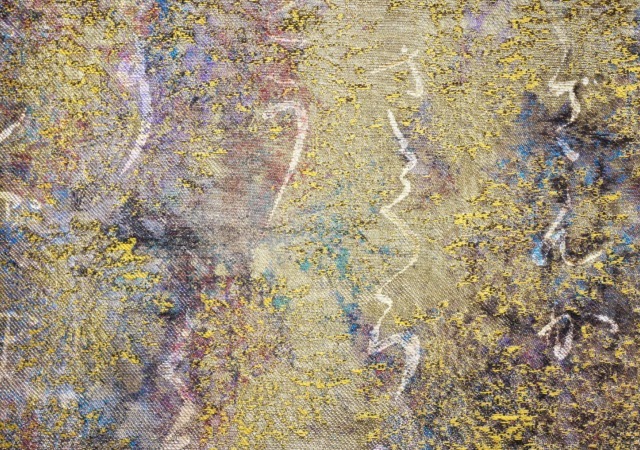
-
History and features of Nishijin textiles
